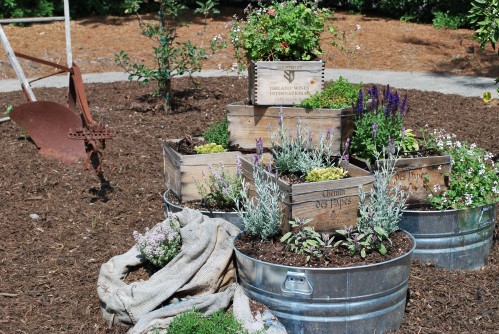 On the recent tour of this year's Encinitas Garden Festival, one of the private gardens had a beautiful white-picket fence enclosing an immaculate raised bed vegetable garden. Adjacent to the vegetable garden was an open area with a pathway and fruit trees. In addition, there was a fabulous focal point of creative staggered containers, using wine boxes, galvanized tubs, and burlap bags. Something so simple, with a "wow" factor. It is structural, functional, beautiful, clever, and unique all in one. Hats off to this homeowner, and their herb garden.
On the recent tour of this year's Encinitas Garden Festival, one of the private gardens had a beautiful white-picket fence enclosing an immaculate raised bed vegetable garden. Adjacent to the vegetable garden was an open area with a pathway and fruit trees. In addition, there was a fabulous focal point of creative staggered containers, using wine boxes, galvanized tubs, and burlap bags. Something so simple, with a "wow" factor. It is structural, functional, beautiful, clever, and unique all in one. Hats off to this homeowner, and their herb garden.
This is reminiscent of an idea in Rosalind Creasy's new book, Edible Landscaping
Most of these containers can be found in local farm and garden supply stores, such as Grangettos, Home Depot, or even flea markets for the weathered and rusty look. Look around your garage, sheds, utility areas for possible containers you might already have. Wine boxes can be found at wine shops, wineries, and friends who are in wine clubs.
It is still important to create holes for drainage in the case of the galvanzied tubs, and line the wooden wine boxes with heavy plastic, small rocks for drainage, and then your preferred soil. Eventually burlap bags will break down exposed to weather elements, but will hold up through a few seasons. Gardener's burlap is strong, yet very reasonable, coming in ready-sewn bags, or longer sheets of material.
With very little expense, and a lot of creativity, you might be able to create a unique container focal point in your garden, too.
VintageGardenGal Tidbit Thyme...
Attention Chicken Lovers! Spruce up your chicken coop for VintageGardenGal's Annual Chicken Coop Photo Contest. Send in your photos this month to bonnie@vintagegardengal.com

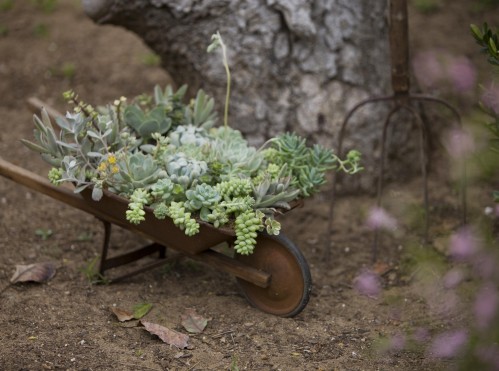
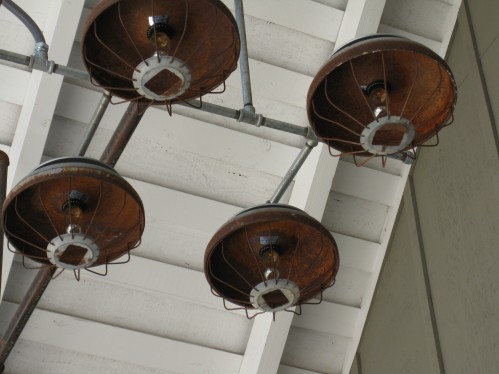
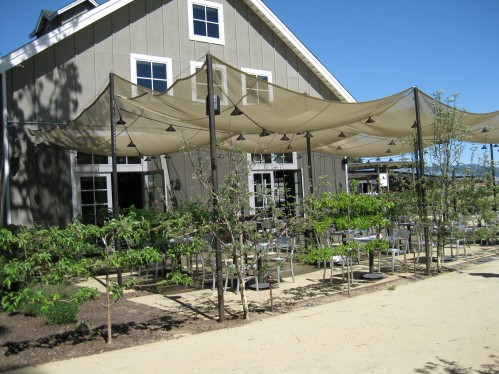
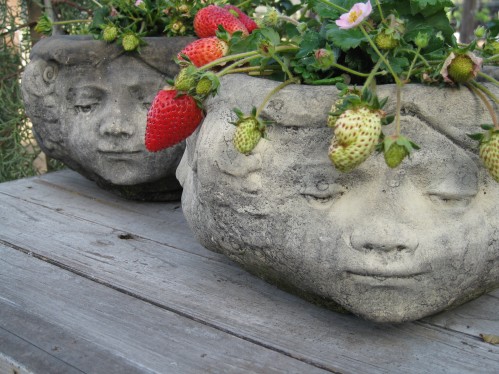
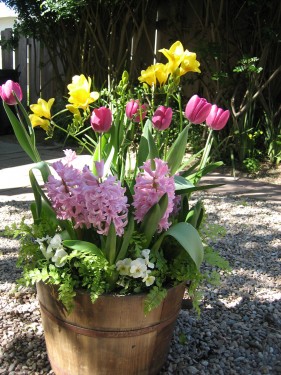
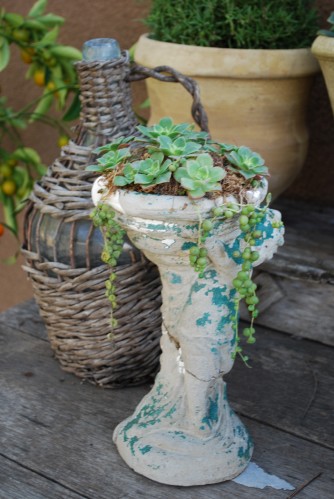
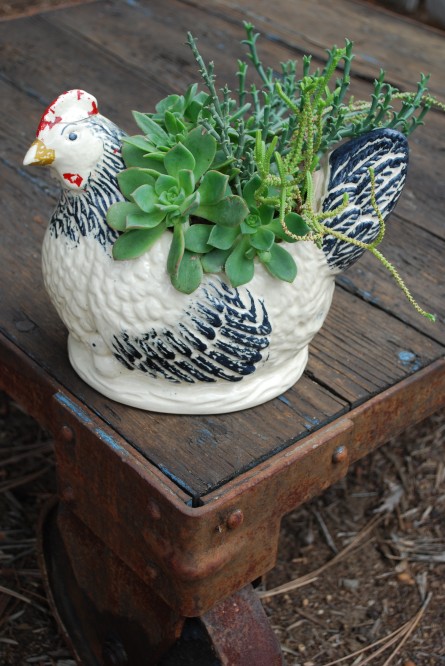 Vintage chicken planter cackles with character, and begs to be potted with succulent plumage. Round and rosette-like, I use my perennial favorite succulent, echeveria, planted at my hen's shoulder and back. Similiar to a perfectly shaped fleur-de-lis, is the handsome green, slightly uncommon ice plant relative, Smicrostigma viride. The chartreuse green notched strands, with a mind of their own, are Crassula mucosa, or Watch Chain succulent (formerly Crassula lycopoidioides). One couldn't ask for better plumage, that keeps on growing.
Vintage chicken planter cackles with character, and begs to be potted with succulent plumage. Round and rosette-like, I use my perennial favorite succulent, echeveria, planted at my hen's shoulder and back. Similiar to a perfectly shaped fleur-de-lis, is the handsome green, slightly uncommon ice plant relative, Smicrostigma viride. The chartreuse green notched strands, with a mind of their own, are Crassula mucosa, or Watch Chain succulent (formerly Crassula lycopoidioides). One couldn't ask for better plumage, that keeps on growing.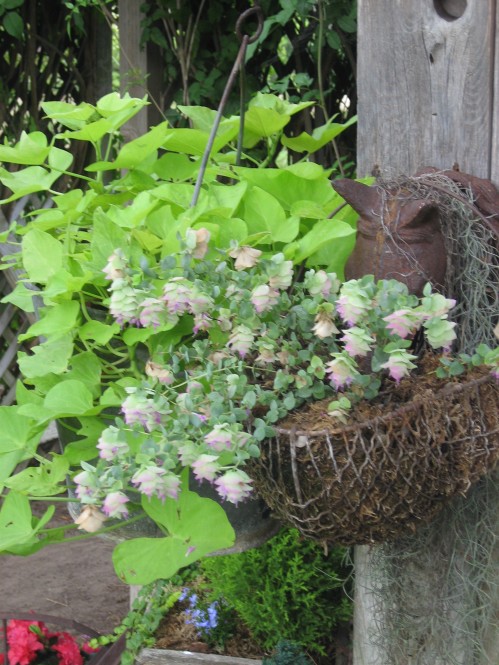 If you are a gardener, chances are you like to grow herbs, too. One of the most beautiful herbs I have ever grown is the ornamental oregano, Kent Beauty, Origanum rotundifolium. While most oregano varieties are grown for their culinary use, Kent Beauty and a few other ornamental oregano varieties are not, and in fact, have no taste at all. Ornamental oregano are best used for their beauty in gardens, borders, and especially containers.
If you are a gardener, chances are you like to grow herbs, too. One of the most beautiful herbs I have ever grown is the ornamental oregano, Kent Beauty, Origanum rotundifolium. While most oregano varieties are grown for their culinary use, Kent Beauty and a few other ornamental oregano varieties are not, and in fact, have no taste at all. Ornamental oregano are best used for their beauty in gardens, borders, and especially containers.